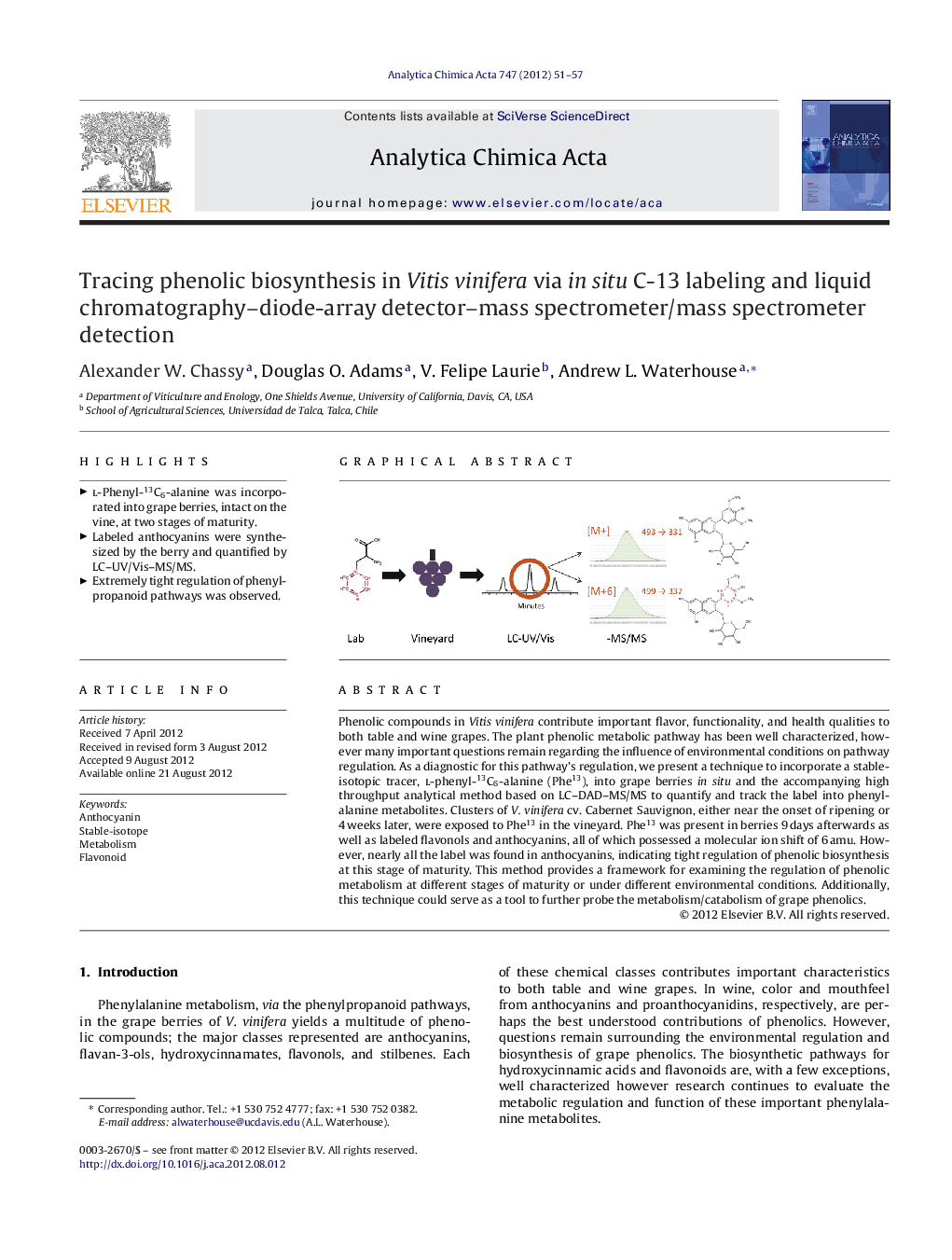| Article ID | Journal | Published Year | Pages | File Type |
|---|---|---|---|---|
| 1165842 | Analytica Chimica Acta | 2012 | 7 Pages |
Phenolic compounds in Vitis vinifera contribute important flavor, functionality, and health qualities to both table and wine grapes. The plant phenolic metabolic pathway has been well characterized, however many important questions remain regarding the influence of environmental conditions on pathway regulation. As a diagnostic for this pathway's regulation, we present a technique to incorporate a stable-isotopic tracer, l-phenyl-13C6-alanine (Phe13), into grape berries in situ and the accompanying high throughput analytical method based on LC–DAD–MS/MS to quantify and track the label into phenylalanine metabolites. Clusters of V. vinifera cv. Cabernet Sauvignon, either near the onset of ripening or 4 weeks later, were exposed to Phe13 in the vineyard. Phe13 was present in berries 9 days afterwards as well as labeled flavonols and anthocyanins, all of which possessed a molecular ion shift of 6 amu. However, nearly all the label was found in anthocyanins, indicating tight regulation of phenolic biosynthesis at this stage of maturity. This method provides a framework for examining the regulation of phenolic metabolism at different stages of maturity or under different environmental conditions. Additionally, this technique could serve as a tool to further probe the metabolism/catabolism of grape phenolics.
Graphical abstractFigure optionsDownload full-size imageDownload as PowerPoint slideHighlights► l-Phenyl-13C6-alanine was incorporated into grape berries, intact on the vine, at two stages of maturity. ► Labeled anthocyanins were synthesized by the berry and quantified by LC–UV/Vis–MS/MS. ► Extremely tight regulation of phenylpropanoid pathways was observed.
